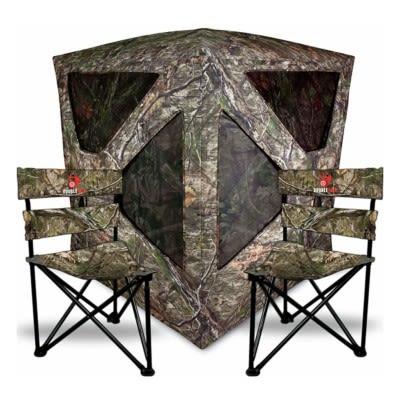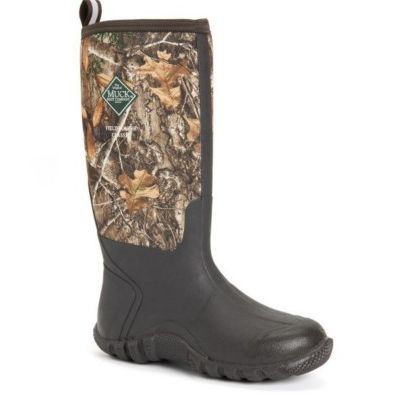While most people think of ice fishing as a recreational hobby, the truth is that it's one of the most challenging ways to spend time outdoors. It contains so many ups and downs that unlike most forms of fishing, you can seem to be having good days or bad days.
One of the major parts that makes ice fishing a make or break sport is lack of mobility. It is often time-consuming to install and remove in one place, and winter conditions can be uncomfortable. On top of that, you're battling the shortest days of the year, and the water is hard, so moving locations or even lakes isn't always feasible.
Fishing in thick ice is important, but it's not the only way to keep yourself out of danger. A few safety items will go a long way in making sure your outing is stress-free. All these are:
l ·Metal cleats for traction on ice
l · An ice cube to check for ice ahead (what you want is a solid knock)
l ·Life jacket
l ·Skates
l ·Whistle if you are in trouble
l · Warm layered clothing
There are a host of other things you could bring, but you should consider these essential. If you’re planning a longer ice fishing trip, think about using an ice shanty (a small shelter to keep you out of the wind and snow).
As with regular fishing, the first thing you need to do is find the fish. During early ice, fish like to feed exactly where they left off just before the water froze. Experienced anglers know this, so they mark the spots on their fish finders before the lake freezes and just go back to them once the ice forms.
During mid-winter, fish like to move into deeper waters where it’s not as cold.If you’re on a lake for the first time, try fishing the basin or the steepest shoreline you can access. Bigger fish like to move along the steep shorelines looking for food, especially during early morning and near sundown. For newbies, targeting schools of fish near the bottom is your safest bet. You can also check if the local bait and tackle shop has some useful pointers.
When you’ve found the perfect spot, great! Now, let’s get drillin’. You’ll need a manual or gas powered auger to drill your fishing hole. Aim for an 8-10” width (wide enough for fish, but too narrow for people).
Once you’ve drilled your hole, use an ice skimmer to remove any remaining chunks of ice. If you’re moving on to another spot to drill a hole, be sure to mark the previous one to avoid any potential accidents.
Ice Fishing Tips and Techniques
1. The line is twisted. Most anglers will only move their jig up and down. The fish gets used to this presentation and stops responding to it. For a change of pace, try holding the line between your index finger and thumb. Next roll or twist the line between your fingers. This will cause the jig to rotate through the water while remaining at the same depth. Also try moving the jig around the perimeter of the hole, but don't make any up and down motion on the jig. Fish respond especially well to this technique in shallow water.
2. Plastic lures. Give live bait a break and use delicate plastic lures exclusively. As unlikely as it may seem, bluegills and other panfish eventually tire of live bait. When this happens, switch to a small 1/80 round head jig with a plastic strip hooked to it. The fine plastic tails of these tiny jigs quiver and wobble with the slightest movement of the rod tip.
3. Bounce bottom. A great way to add more giant bass to the bucket is to bounce the jig off the lake bottom. Bass primarily feed within a few inches of the bottom. By having the jig bounce off the bottom, the small cloud of bottom debris and the resulting sound will attract fish from a distance. This trick also works with bluegill sunfish. At some point, it's more productive to let the jig bottom out and then rest on the bottom. To use this method, a spring float can be helpful. The jig should just rest on the bottom of the lake with enough weight of the jig on the spring float to hold it half way. When a fish takes the bait, it usually rises with the jig and causes the spring float to rise.
4. Looking Down the Hole. For a stiff neck and a few extra fish, try staring into the hole to see the fish take the bait. This method is great for learning how fish respond to various baits and jigging techniques. It's also an excellent way to catch larger bluegills, perch and hanging bass. Big bluegills have a way of hovering for a few seconds in front of the bait, sucking it in, and then spitting it out quickly. Since this happens so quickly and with little to no movement of the line, fixed floats or even spring floats usually won't detect this type of bite. Your only hope of catching these fish is to look down the hole and set the hook after the fish has sucked into the jig. This trick also works with hanging crappies. In both cases, brightly colored jigs that hang horizontally work best because they are visible at greater depths and in stained water.
5. Chum. To gain an edge over other ice anglers, try making friends. Take some extra waxworms, spikes, or minnows, crush them and throw them in the hole. Not only will this trick attract more fish to your area, but it will also make the fish more active in feeding.
6. Keep Warm.When the temperatures dip to sub-zero and the wind howls across the ice, try using rechargeable hand warmers. The rechargeable hand warmers like Ocoopa Union 2s last up to 8+ hours on low. They are perfect for stationary anglers. If you find disposal hand warmers not practical, try bringing the rechargeable hand warmer after getting to your ice fishing spot.
7. Change Sizes. Instead of changing the color when the action slows down, try changing the size of the jig. This trick works two ways - switching from a smaller jig to a larger jig, and from a larger jig to a smaller jig. One of my favorite ice fishing jigs is the #10 Teardrop Red and Chartreuse from Jammin' Jigs. After catching as many fish as possible on this jig, I will switch from a size 10 Teardrop to a size 6 Teardrop which is almost twice the size but the exact same color. This often results in the catch of some larger bluegills. As a last thing, I'm switching to the subminiature 12 size Teardrop jig and will be catching more fish that the other two sizes can't.
8. Cover the Hole. In shallow water, cover the hole with ice chips to block light from entering the water. This applies to both clear and stained water lakes. Glow in the dark using this method also works well in stained water.















